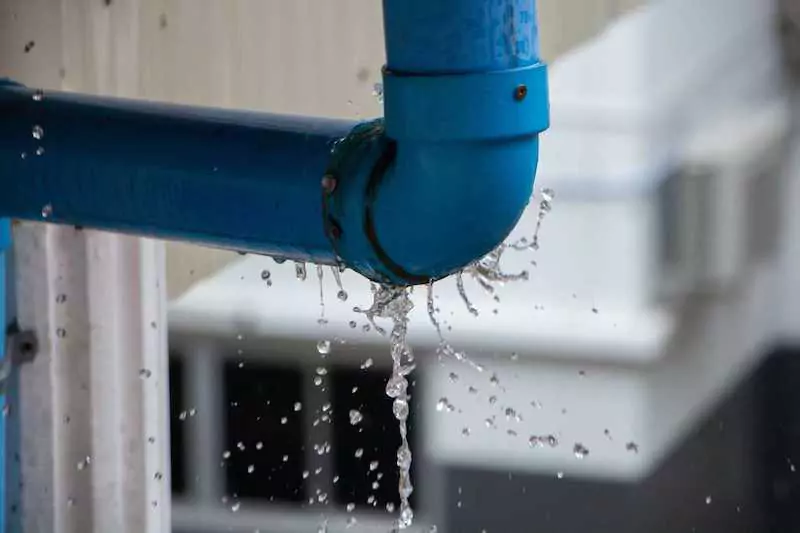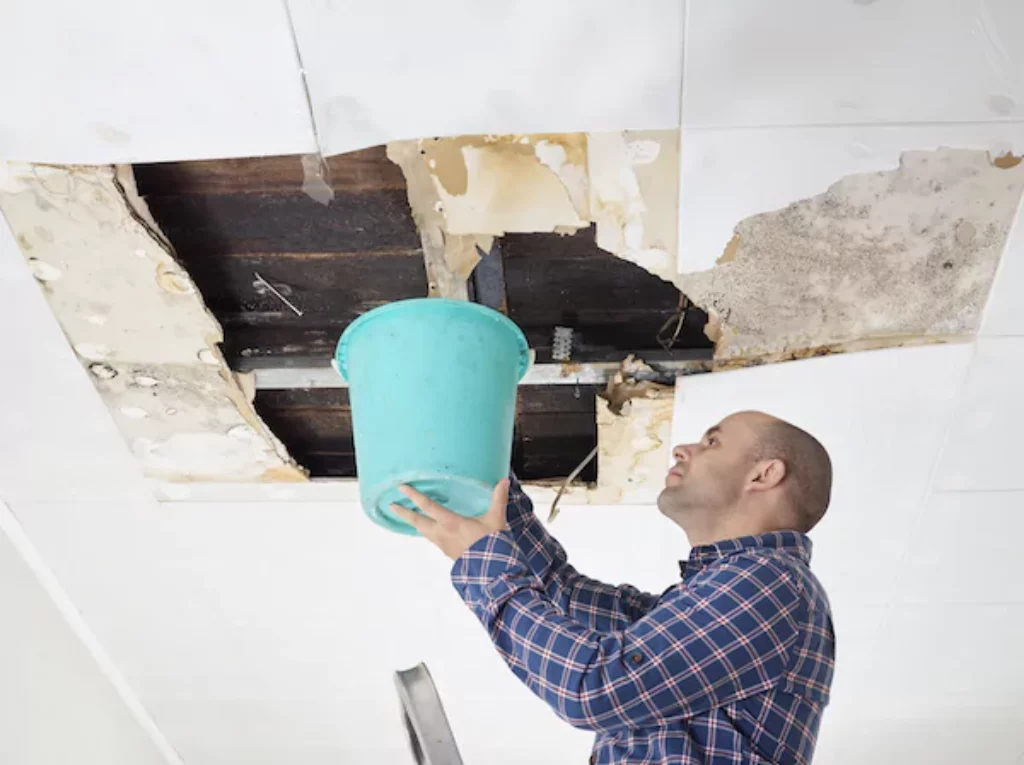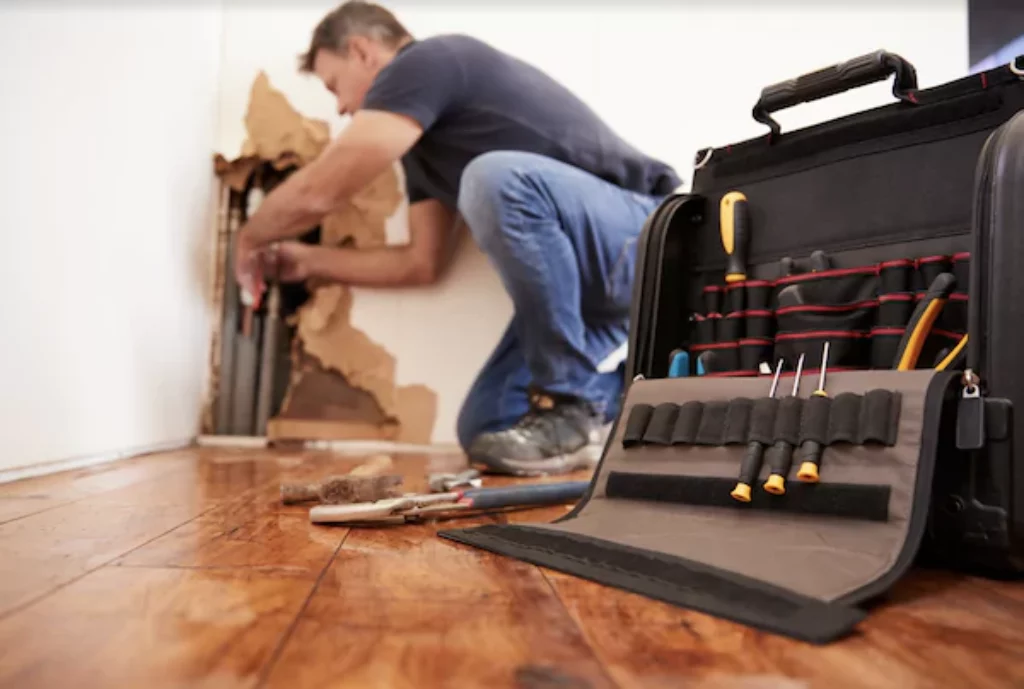7 Tips For Water Damage Repair

Water damage may seem to be a minor issue, but if it’s not resolved immediately, it may result in more significant difficulties. In fact, extensive damage may weaken your property’s structure – resulting in a collapse later on. Regardless of how the it happens or what materials and items were affected, proper water damage can restore your property and thoroughly fix the issue.
However, it’s essential to remember that each situation is different when water damage happens. If you don’t know where to start with water damage repair, you can read this blog about flood restoration. The following tips may also help resolve your water damage concerns:

Hire Professional Water Damage Restoration Services
If you’re facing serious water damage, you should hire professional water damage restoration solutions with experienced teams. They’ll have the knowledge and equipment to do effectively and safely fix water damage.
Whether the water damage is due to common roof problems or natural disasters, a reliable professional restoration service provider can offer you the right course of action to avoid further water damage. In fact, hiring professionals for water damage restoration is an excellent way to ensure your house is adequately repaired.
Disconnect Outlets
Once you notice water damage, you must disconnect the outlets near the flooded area. If it’s throughout the house, every electrical power should be disconnected, and call a professional if necessary.
While this method may seem extreme, it’s challenging to notice the full extent of the problem by looking at it. In addition, electrocution can occur once you fail to disconnect the outlets and some electrical devices. So, before you start repairing water damage, do your best to disconnect the outlets first.
Check Your Property’s Structural Integrity
Remember that water may weaken most construction, especially if the flood lasts long. Check foundations, basements, load-bearing columns, and walls for structural weakness and cracks. Pay attention to the basement walls that can be weakened when the basement is dried out while the ground is still saturated.
Inspect For Serious Problems Like Mold
Inspect the damaged materials for mildew and mold. Within a day, mold may start to grow. If you find mildew or mold issues, you have to be careful.
While other types of mold can be toxic to people, every mold type can damage anything it infests. For minor mold problems, cut out the materials, bag them, and throw them away quickly. Nonetheless, if the mold problems are serious, don’t enter your property, and shut down the airflow to prevent spore contamination. You should call professionals to eliminate mold appropriately.
Dry Out Everything Immediately
Newer houses and structures must be dried out as quickly as possible to reduce mold growth and minimize the risk of rotting masonry and wooden structures. So, you should prioritize getting the water out of your property.
The longer the water sits on your property, the bigger issue it may leave. You can dry out your property in many ways. For example, you can sweep the water out or use a shop vac for small damaged areas.
If you have carpets, you need to use a shop vac to dry them out and avoid further damage. You can hire professionals to help you too. Although hiring professionals can be an extra expense, it can save you time as they have the right tools to dry your property quickly.
Plus, you can consider using big heaters, air conditioners, or fans to dry your property. Yet older structures must be dried naturally or slowly to prevent cracking and splitting aging and fragile materials.

Dispose Of Damaged And Porous Materials
In case of flood and other significant problem, porous materials should be thrown away and removed from your property. Such materials absorb a massive amount of water and become damaged beyond repair or may cause mold growth.
Typically, such materials are beyond saving, particularly in the case of black or grey water damage. The common porous objects that require disposal are as follows:
- Carpet;
- Drywall;
- Insulation;
- Rugs;
- Mattresses;
- Upholstered furniture; and so on.
Small objects, including clothing, blankets, and stuffed animals, are still salvageable when cleaned thoroughly and quickly. Nevertheless, anything that can’t fit into a washing machine may harbor mildew and should be thrown away.
Disinfect The Remaining Materials
When damaged components are removed, the next thing you should do regarding water damage restoration is to disinfect your property before you start the restoration process. The most typical option is a bleach solution. But there are some homemade options you may also consider. For instance, you can lightly spray the surface area and wipe it down before you start fixing the problem to ensure no mold spores linger.
Conclusion
Water damage can be complex to repair. But by following the above tips, it’s possible to fix it and restore your property. Keep in mind that it’s essential to remember that you can’t do it alone. For best results, work with the best water damage restoration specialists in your area.

